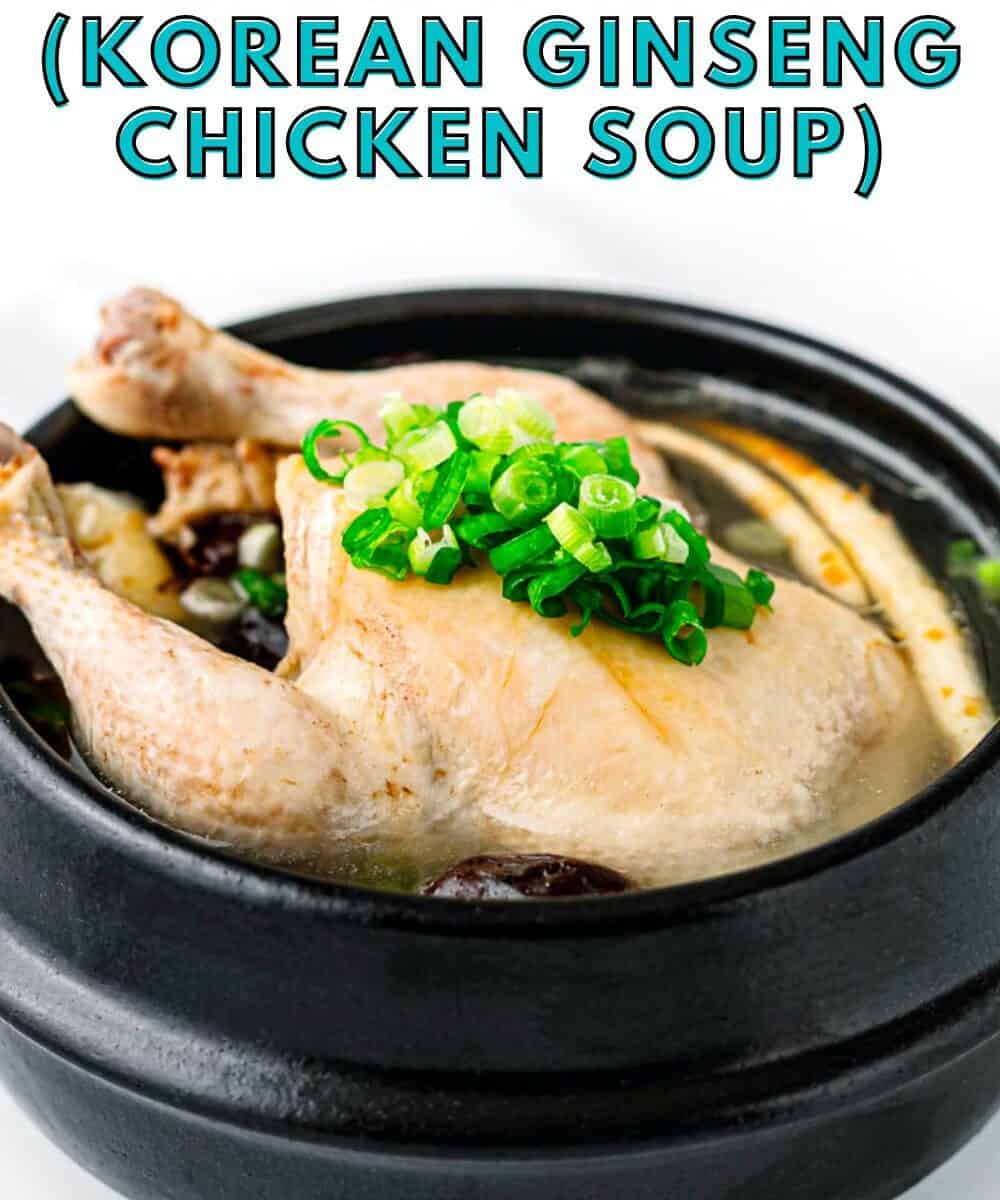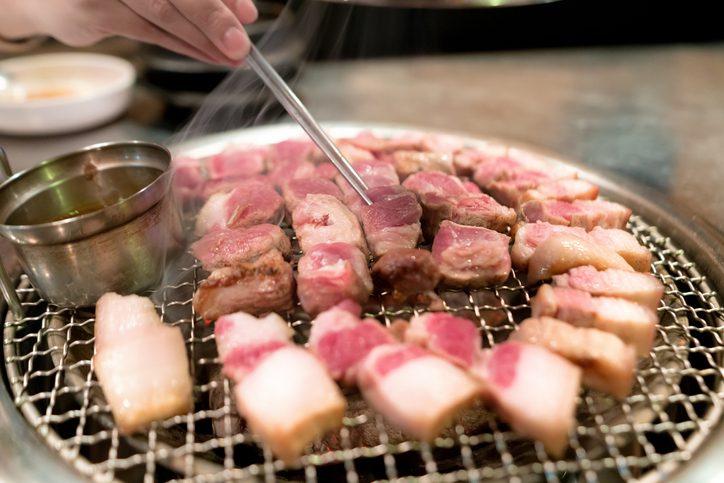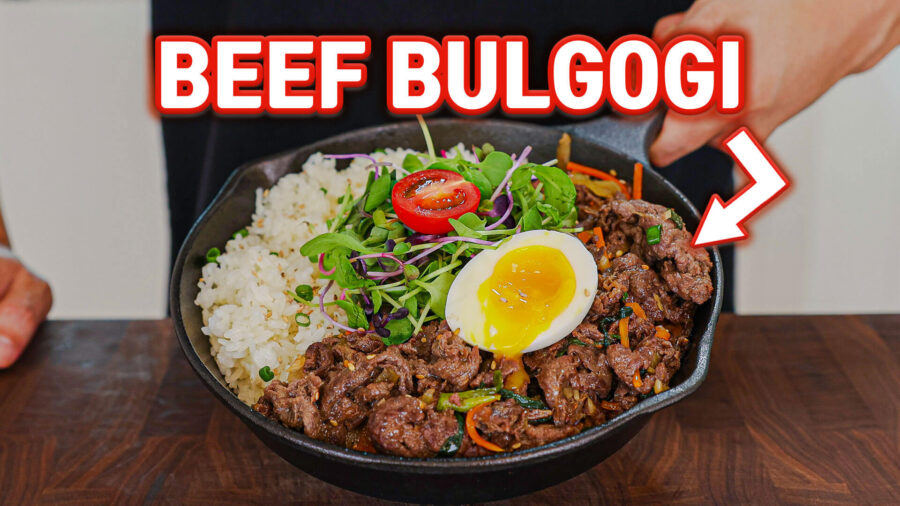
Delivering the Taste of Korea to the World: Exploring the Charm of Korean Cuisine with Bulgogi
Today, I would like to talk about bulgogi, one of the most representative foods of our country. Bulgogi is among the most famous and beloved Korean dishes. With the goal of sharing the taste of Korea with the world, we embark on an exploration of the charm of Korean cuisine through bulgogi. Let’s learn more together!

The Globalization of Korean Cuisine: The History and Origin of Bulgogi
Korean cuisine is known as one of the most popular foods worldwide, and bulgogi has played a significant role in its globalization. As one of the most famous and representative dishes of Korea, its taste and aroma have captivated many people’s palates. So, what history and origin does bulgogi have?
The origin of bulgogi dates back to the Goryeo Dynasty. At that time, social classes were clearly distinguished, and the Goryeo royal family and nobles enjoyed high-quality foods. They made various dishes using beef, one of which was ‘bulgogi.’ Back then, thinly sliced beef was grilled over fire, which was called “bulgui,” marking the early form of bulgogi.
Later, during the Joseon Dynasty, bulgogi spread to the general population. The technique for making bulgogi developed during the Joseon Dynasty, enhancing the taste and flavor of the meat. The Joseon royal family also enjoyed bulgogi, establishing it as part of the royal cuisine.
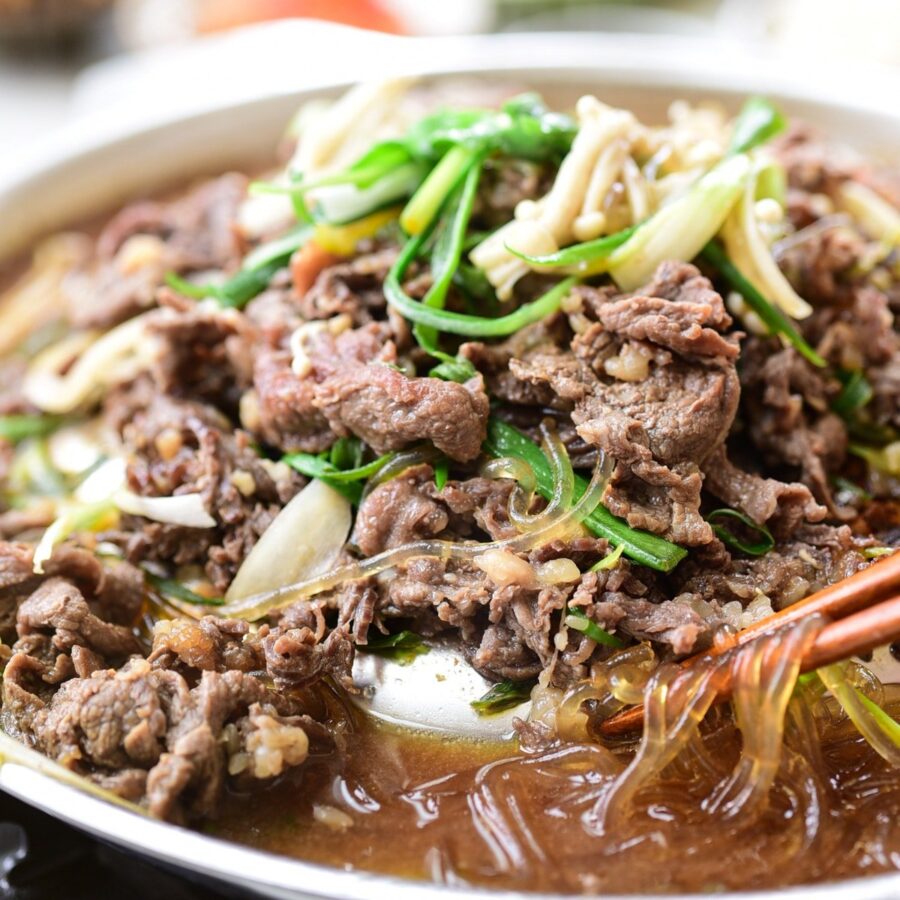
Introduction to Basic Ingredients and Cooking Method of Bulgogi
The basic ingredients needed to make bulgogi are as follows:
- Beef: Bulgogi commonly uses beef cuts such as sirloin or tenderloin. These parts are soft and contain tender fibers, which disappear when grilled, allowing you to enjoy a tender texture.
- Onion: Onion is used as a seasoning ingredient for bulgogi, playing a role in seasoning the meat properly.
- Garlic: Garlic is an important ingredient in bulgogi seasoning. It has a strong aroma and flavor, adding depth to the meat when grilled together.
- Soy Sauce: Soy sauce is the main ingredient in bulgogi seasoning. It can give a deep flavor to the meat, especially appealing to those who prefer a rich taste.
- Sugar: Sugar is used in the bulgogi seasoning to add sweetness. It harmonizes the flavor of the meat and balances the seasoning.
There are various methods to cook bulgogi, but a representative method is as follows:
- Thinly slice the beef and marinate it with onions and seasoning.
- Heat a grill or frying pan with oil, and cook the marinated bulgogi.
- Depending on the situation, vegetables can be grilled together with the meat.
- Serve the grilled bulgogi in a dish, finishing it off so that the surface is crispy.
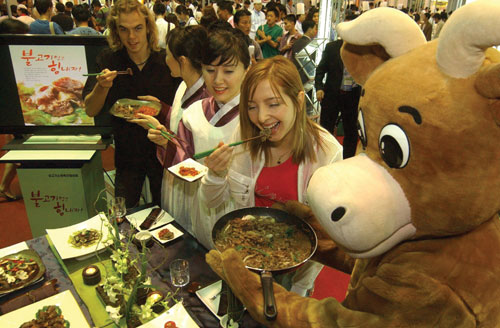
Variations of Bulgogi: Regional Differences in Taste and Characteristics
Bulgogi has undergone various transformations in different regions of Korea. Each region has its unique taste and cooking method, offering a wide range of choices for those who enjoy bulgogi.
For example, Seoul-style bulgogi is marinated with soy sauce and thinly sliced beef before grilling. This traditional method preserves the texture and flavor of the meat.
On the other hand, Jeonju-style bulgogi is made with thicker slices of beef marinated with soy sauce before grilling. It uses grilled meat parts, allowing the meat to be tender and soft.
Additionally, Daegu-style bulgogi is made with pork instead of beef. Pork has a different taste and aroma from beef, giving Daegu bulgogi a unique flavor.
In this way, bulgogi variations from various regions offer distinct tastes and characteristics, enjoying popularity among tourists visiting Korea.
Enjoying Bulgogi Properly: Traditional Presentation and Modern Variations
To fully enjoy bulgogi, it’s important to consider both traditional presentations and modern variations. Traditional presentation maximizes the taste and aroma of bulgogi in harmony with Korean food culture.
The traditional presentation includes the following foods:
- Rice: Rice is a staple food in Korea and balances the taste when eaten with bulgogi.
- Kimchi: Kimchi is one of the representative side dishes in Korea, neutralizing the greasy taste of the meat when consumed together.
- Namul: Namul refers to fresh vegetables, adding flavor to the meat when eaten together.
- Gim: Gim is a representative ingredient in Korea, wrapping the meat to enhance its flavor.
Additionally, a modern twist is utilizing bulgogi in various dishes. For example, enjoying bulgogi in sandwiches or burgers is one such example. These variations can add the taste and flavor of bulgogi to a variety of foods, providing a new taste experience.

Understanding Korean Food Culture: Side Dishes with Bulgogi
In Korean food culture, when consuming food, various side dishes are served together. These side dishes are an important element that completes Korean food, and consuming them with bulgogi can further enhance the taste and flavor.
The typical side dishes served with bulgogi include:
- Kimchi: Kimchi is one of the representative side dishes of Korean food, made with fermented cabbage. It is characterized by its spicy and salty taste, and eating it with bulgogi enhances the flavor of the meat.
- Namul: Namul refers to fresh vegetables and has various types and flavors. Consuming it with bulgogi adds an extra layer of flavor to the meat.
- Pancakes: Pancakes are made by frying ingredients, and when eaten with meat, they create a harmony of taste with their crispy texture. Steamed
- Eggs: Steamed eggs are made with eggs and are characterized by their soft texture and mild taste. Consuming them with bulgogi can balance the strong taste of the meat.
Thus, the side dishes served with bulgogi provide a good opportunity to experience the diversity and taste of Korean food culture.

The Secret of Taste: The Harmony and Balance of Bulgogi
Marinade A crucial factor that determines the taste of bulgogi is the marinade. The marinade plays a role in adding flavor to the meat, and it must be mixed harmoniously with various ingredients to achieve a balance of taste.
The main ingredients of bulgogi marinade and their roles are as follows:
- Soy Sauce: Soy sauce is a primary ingredient used in bulgogi marinade. It has a rich taste and flavor, adding depth to the meat.
- Sugar: Sugar is used to add sweetness to the bulgogi marinade. It balances the taste of the meat and the marinade.
- Garlic: Garlic is an essential ingredient used in bulgogi marinade. It has a strong aroma and taste, adding flavor when grilled with the meat.
- Onion: Onion is an ingredient used in bulgogi marinade, playing a role in seasoning the meat appropriately.
- Chili Powder: Chili powder is used to add spiciness to the bulgogi marinade. It is a good choice for those who like spicy flavors.
The harmony and balance of bulgogi marinade can vary depending on the ratio and method of using each ingredient. Therefore, finding the appropriate ratio and combination to suit one’s taste can enjoy the balance of flavors.

Bulgogi Capturing the Palates of People Worldwide
Bulgogi is one of Korea’s representative foods, loved worldwide. Its taste and flavor have made many foreigners enjoy bulgogi and fall in love with Korean food.
Especially with the rise of the Korean Wave, Korean food, including bulgogi, has gained significant popularity. People exposed to Korean culture through Korean dramas and music naturally become interested in Korean food, among which bulgogi enjoys the highest popularity.
Bulgogi is also being modified and mixed in various ways around the world. For example, Japan’s similar bulgogi, ‘Bul-taki,’ and America’s ‘Bulgogi Burger’ are representative examples. These variations reflect each country’s taste and culture, playing a significant role in capturing the palates of people worldwide.

Creative Cooking Ideas Using Bulgogi
Bulgogi is an ingredient that can be used in various dishes, greatly aiding in implementing creative cooking ideas. Here are some creative cooking ideas using bulgogi:
- Bulgogi Fried Rice: Bulgogi fried rice, made by stir-frying bulgogi and rice together, is a popular dish among Koreans. The taste of bulgogi and the texture of rice create a delicious combination, and it can be enjoyed with various vegetables.
- Bulgogi Gimbap: Bulgogi gimbap, made by putting bulgogi inside gimbap, is one of Korea’s representative snacks. The taste and aroma of the meat are packed inside the gimbap, allowing you to feel various flavors and aromas with each bite. Additionally, it can be enjoyed more deliciously with simple sauces and various vegetables.
- Bulgogi Quesadilla: Bulgogi quesadilla, made with bulgogi and cheese, is a combination of Mexican and Korean food. The savory taste of bulgogi and the pleasant texture of cheese create a perfect combination, which can be enjoyed with tomato sauce or various sauces.
- Bulgogi Skewers: Bulgogi skewers, made by threading bulgogi onto skewers and grilling them, are a popular menu item at parties and gatherings. They deliver the full flavor and aroma of the meat and can be enjoyed with a variety of sauces.
As such, bulgogi is an ingredient that can be used in a variety of dishes, allowing for the enjoyment of different tastes and flavors through creative cooking ideas.
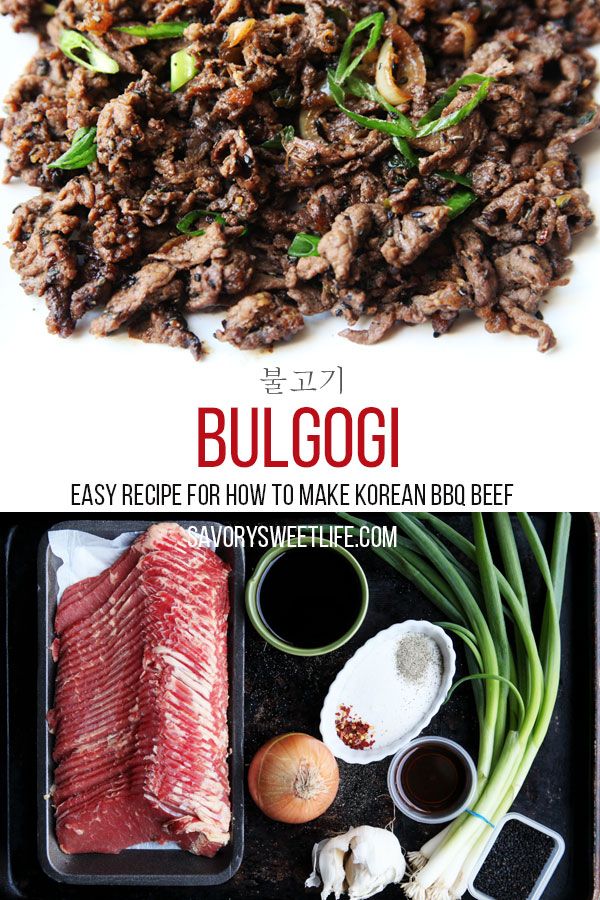
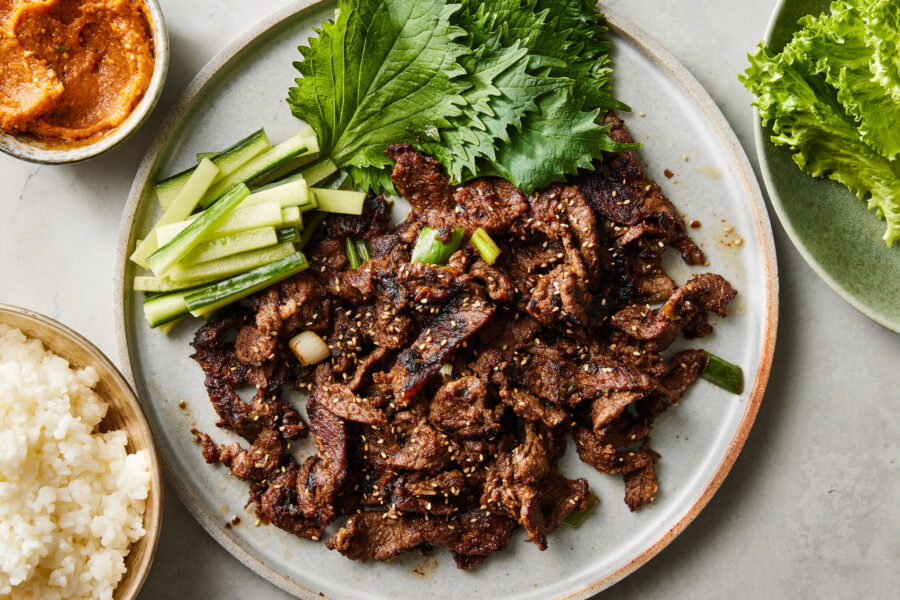
Bulgogi and Health: Nutritional Benefits and Cautions
Bulgogi is delicious but also offers nutritional benefits that are good for health. Here are the main nutritional benefits and cautions of bulgogi.
Nutritional Benefits:
- Protein: Since bulgogi uses meat as its main ingredient, it is rich in protein. Protein is a nutrient necessary for maintaining our body’s functions and building tissues, and is important for maintaining a healthy body.
- Vitamin B12: Bulgogi contains vitamin B12, which is important for blood formation and nerve function. It also helps with energy production and strengthening the immune system.
- Iron: Bulgogi contains iron, which plays an important role in the transport of oxygen in the blood. Iron helps prevent anemia and aids in energy production.
Cautions:
- Fat: Since bulgogi uses meat, it may have a relatively high fat content. It is advisable to choose lean cuts of meat or remove the fat before consumption.
- Salt: Bulgogi marinade may contain salt. Excessive salt intake can have a negative impact on health, such as high blood pressure, so it’s important to control salt intake.
- Cooking Method: Grilling bulgogi at high temperatures can produce carcinogens. These substances can be formed when the meat is excessively charred, so it’s best not to consume too much.
While bulgogi is nutritionally beneficial, it is important to pay attention to the amount consumed and the cooking method to include it in a healthy diet.

The Future of Bulgogi: The Intersection of Tradition, Modernity, and Globalization
Bulgogi is one of Korea’s traditional foods, captivating many with its taste and flavor. However, in modern society, bulgogi is evolving in a direction that maintains its taste and flavor while also becoming more convenient and meeting diverse demands.


